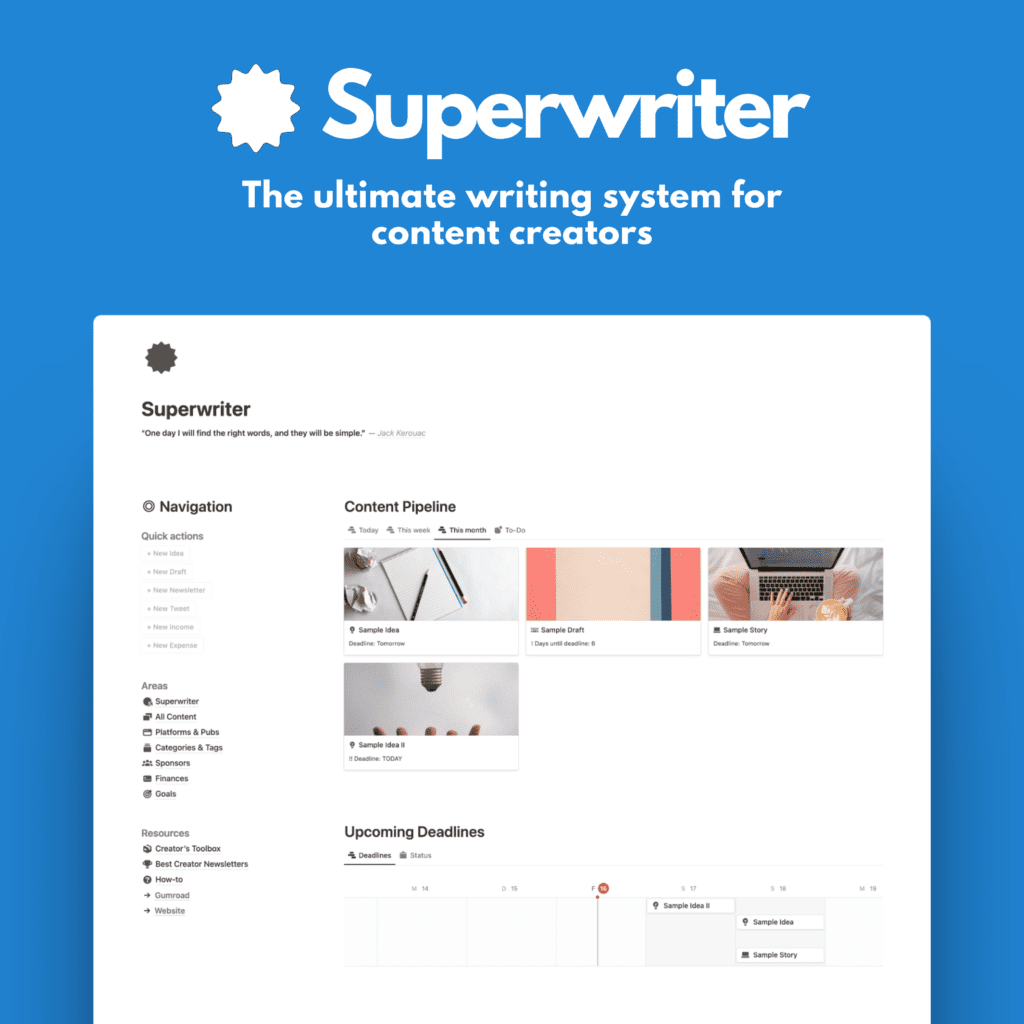Let’s face it: paid subscribers are great.
For multiple reasons:
- They pay for your writing
- It feels good to have direct compensation and reassurance
- It’s a direct way to get paid within Substack
So, paid subs are the holy grail for many Substack writers.
But here’s the thing – they’re not the only path to success on this platform.
In fact, some savvy creators aren’t even trying to get paid subscribers (at all).
They’re making money in other ways, and honestly? That’s pretty smart.
Why Paid Subscribers Shouldn’t Be Your Only Goal
I get it. The idea of a steady stream of income from loyal readers is appealing, to say the least.
But let’s break down why putting all your eggs in the paid subscriber basket might not be the best move:
- It’s a tough nut to crack: You need hundreds, sometimes thousands of paid subscribers to make a decent income. That’s no small feat, especially if you’re just starting out or writing in a niche field.
- The pressure is real: When people are forking over cash for your content, they expect the good stuff. Consistently. That kind of pressure can burn you out fast.
- You’re limiting your reach: Paywalls are great for making money, but not so great for growing your audience. Some of your best work might never see the light of day beyond a select few.
- It’s all or nothing: Relying solely on subscriptions is risky. If subscribers start dropping off, your income takes a direct hit.
So, what’s a Substack writer to do?
Simple: diversify.
Let’s talk about some creative ways to make money on Substack that don’t involve begging for paid subscriptions.
Ways to Make Money on Substack Indirectly
1. Sell Products That Make Sense
You’ve got an audience that’s interested in what you have to say. No matter the niche or topic, that’s a brilliant start to think about and try creating products or services around your niche.
No-brainer starting points:
- Write an e-book or create a digital guide
- Develop an online course or workshop
- Sell merch
- Create digital templates or tools your audience would find useful
The key here is to offer products that align with your content and provide real value to your readers.
I do that with Notion templates, writing templates, and more.
2. Offer Your Expertise as a Service
Your newsletter is basically a showcase of your knowledge and skills. And that’s important, because it the one thing that differentiates you from a Google search result. People start to trust in what you say.
Use it to your advantage (in a good way!):
- Offer consulting or coaching sessions
- Provide freelance services
- Do custom research or analysis for clients
This approach works especially well if you’ve established yourself as an expert in your field.
Your newsletter serves as a constant reminder of what you bring to the table.
3. Dip Your Toes into Affiliate Marketing
Affiliate marketing can be a great way to monetize your Substack, especially if you’re already recommending products or services to your readers.
And affiliate marketing has a bad rep, I believe. Sure, it can be a a way to sell crap. And that sucks. But it can also be a great way to promote stuff you really love while getting paid.
Here’s how to do it right:
- Only promote stuff you actually believe in
- Be upfront about your affiliate relationships
- Give honest, detailed reviews – not just sales pitches
The goal is to provide value to your readers while earning a little something on the side.
4. Sponsored Posts
Sponsored content can be a nice income boost, but it’s tricky territory.
If you go this route:
- Choose sponsors that align with your values and your audience’s interests
- Clearly label sponsored content
- Maintain your authentic voice – don’t sound like a walking advertisement
- Also, don’t do it too often
Remember, your readers’ trust is your most valuable asset. Don’t squander it for a quick buck.
5. Advertisements
Some Substack writers incorporate ads into their newsletters or on their Substack homepage.
And by ads, I don’t mean banners or images like you’d see on a Google AdSense blog.
I am talking about strategically positioned (and labelled) content (writing, media, links, etc.) within your posts and issues.
If you’re considering this:
- Use ads sparingly – nobody likes a cluttered newsletter
- Choose ad partners carefully
- Use a good screening method
- And be upfront with readers
6. The Redirect Strategy
Here’s a clever approach some writers including myself are incorporating: use Substack to build an audience, then redirect them to platforms where you can earn more.
Some people love curation newsletters. By this I mean newsletters that don’t have long stories and posts, but rather feature excerpts and links to the full articles.
Many readers like this, because:
- It makes the newsletter issues shorter
- They can decide what to read and what to skip
- It usually means more content in a single issue (without more words stuffed into it)
But there are downsides as well:
- You might redirect readers away from Substack and they might not like that
- You need a second or third platform
- It’s more stuff to keep track of
If you’re still interested in this redirection tactic, and I think you should at least give it a try (I do it regularly), here are a few ideas:
- Link to your articles on Medium (where you can earn based on reader engagement)
- Direct traffic to your personal blog with AdSense or other income opportunities
- Share snippets on Substack, with full articles available on platforms like Vocal or NewsBreak
This strategy lets you leverage Substack’s discoverability while monetizing your content elsewhere.
You can also feature posts from other people that way. Stuff you like yourself.
The Bottom Line
Paid subscribers are great, but they’re not the only game in town on Substack.
Far from it.
By diversifying your income streams, you’re setting yourself up for more stable, sustainable success on Substack.
You’re also giving yourself the freedom to experiment, grow your audience, and create content without the constant pressure of justifying a subscription fee.
And you don’t have to wait for hundreds of paid subs to sign up to make a good income from your writing.








